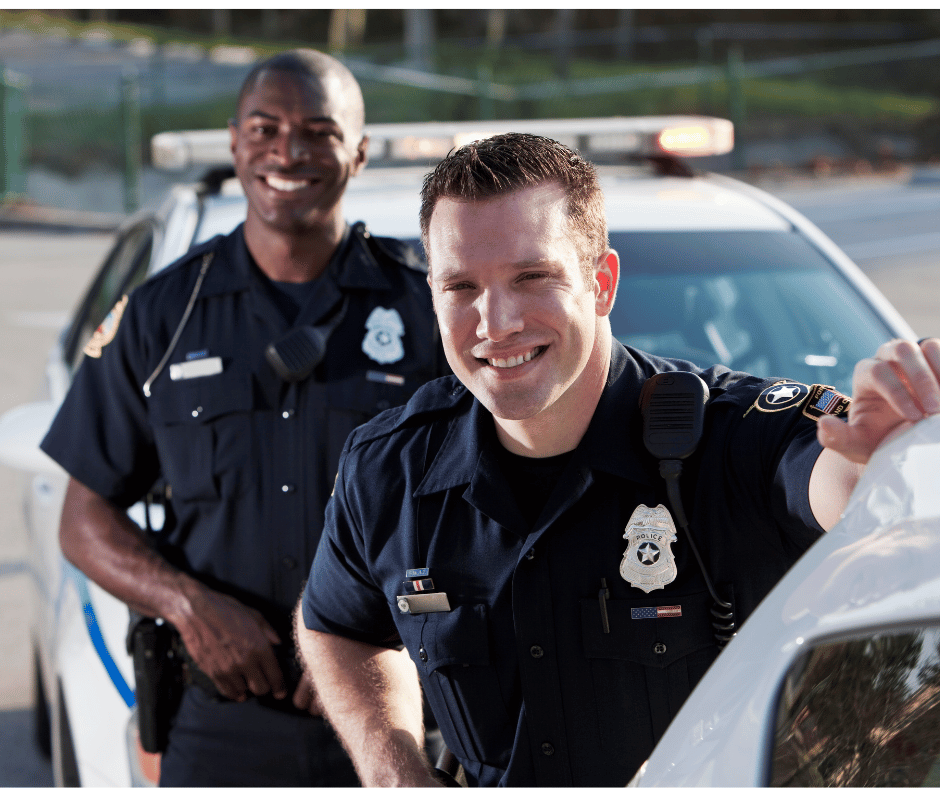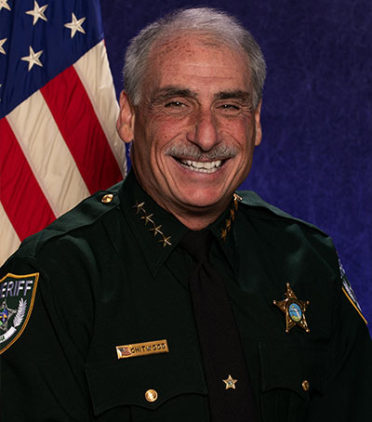Keeping the Faith Safely: Security Measures for Churches

In today’s world, churches must be vigilant in ensuring the safety and security of their congregation. From active shooters to property crimes, there are numerous threats that can disrupt the peace and sanctity of houses of worship. Using a church security system is key to developing a comprehensive church security plan and is essential in addressing these concerns and maintaining a safe environment for all. This blog post will guide you through understanding the various threats, building a security team, developing a security plan, and leveraging technology to enhance your church’s security measures.
Quick Summary
- Understand church security threats and take proactive steps to protect the congregation.
- Build a team, develop an all-encompassing plan & enhance physical security measures.
- Train staff/volunteers, collaborate with law enforcement, leverage technology for enhanced security & continuously evaluate the plan.
Understanding Church Security Threats
Houses of worship are often considered soft targets due to their open design and accessibility, making them vulnerable to a range of security threats. Recent events, such as the tragic shooting at the First Baptist Church in Sutherland Springs, Texas, have highlighted the urgent need for effective security plans in churches. Moreover, approximately 617 worshipers have been killed in violent events across the United States since 1999, emphasizing the importance of developing a safety and security program.
Aside from active shooters, churches also face threats such as vandalism, robberies, and medical emergencies. Assessing these potential risks plays a pivotal role in crafting a well-rounded security plan tailored to the unique challenges churches encounter. By understanding the security concerns specific to houses of worship, church leaders can take a proactive approach to ensuring the safety of their congregation.
Working in unison with local authorities, such as the fire department, significantly contributes to forming a security plan that can handle a wide range of potential threats. Churches should also consider cost-effective methods to enhance safety and security, such as implementing intrusion detection systems and promoting awareness of emergency exits.
Building a Church Security Team
Establishing a robust church security team is a fundamental element in a successful security plan. It’s imperative to pinpoint individuals with the required qualifications and experience, like those with military or security backgrounds, while building a security team. By recruiting professionals from within the congregation, such as doctors, medics, and police officers, churches can assemble a team of individuals with diverse skills and expertise.
Assigning specific roles and responsibilities is the first step in establishing a secure church. Emergency contact details for local law enforcement, board members, church staff, and other security team members should be readily available to all team members. Regular meetings should be held to discuss plans and protocols, such as lockdowns, evacuations, and medical emergency responses.
For a proficient security team, it’s crucial that volunteers receive orientation and training aligned with the church’s mission and purpose. Background checks should be conducted on all team members to provide the congregation with a sense of security. Continual training and assessment are necessary to maintain a high level of preparedness and competence among the security team.
Developing a Church Security Plan
Developing an all-encompassing church security plan entails the following steps:
- Evaluate church assets and skills
- Delineate roles and responsibilities
- Formulate an action plan
- Devise distinct measures for each identified threat
- Communicate expectations and objectives with staff and volunteers
- Conduct risk assessments
- Establish emergency action plans
By following these steps, churches can ensure they are prepared for various security scenarios.
Creating policies and procedures that address the unique security concerns of houses of worship is essential for maintaining a safe environment. This includes implementing access control systems, video surveillance, and alarm systems to deter criminals and monitor church property.
Routine assessment and revisions of the security plan are indispensable to maintain its efficacy and applicability. By continuously assessing and revising the plan, churches can identify areas for improvement, tackle new threats, and guarantee that the plan remains efficient and applicable.
Enhancing Physical Security Measures
Augmenting physical security measures forms a significant part of church security planning. Investing in the following can significantly improve a church’s safety and security:
- Access control systems: allow churches to monitor entry to each room and track who has entered the premises
- Video surveillance: provides visual monitoring of the church premises
- Alarm systems: alert authorities and church staff in case of any security breaches
Video surveillance systems should be carefully selected based on factors such as:
- Installation requirements
- Broadcasting capabilities
- Video footage storage
- Image resolutions
Network Video Recording (NVR) systems, for example, offer high-quality image and audio resolution and upload footage to the cloud for secure storage.
Implementing a single entrance policy in churches can greatly enhance security by allowing for better monitoring and response to potential threats. To ensure safe exits during a fire emergency, all other exit doors must be unlocked from the inside to facilitate a calm exit from the building.
Training and Educating Church Staff and Volunteers
Imparting training and education to church staff and volunteers is a key factor in upholding a safe environment. Topics covered in security training should include access control, observation techniques, and emergency response procedures. By equipping staff and volunteers with the knowledge and skills to respond appropriately in any given situation, churches can ensure the effective implementation of their security plan.
Marksmanship training for armed security personnel is crucial in a crowded environment such as a church. Maintaining proficiency with firearms ensures that security guards, military personnel, or police officers can effectively respond to an active shooter situation. Providing volunteers with radios can also enhance communication and incident response capabilities.
Department of Homeland Security resources, such as “See Something, Say Something” and “Run, Hide, Fight,” can be valuable tools for free church security training. Ensuring that all staff and volunteers are familiar with the church’s security plan and procedures is essential for maintaining a safe environment.
Collaborating with Local Law Enforcement
Working together with local law enforcement agencies can offer valuable understanding, resources, and backup for the planning and execution of church security measures. By forming partnerships with local law enforcement, churches can ensure the successful execution of their security plan in the event of an emergency.
Emergency services, such as the fire department, can assist in creating a church security plan by:
- Discussing safety and security measures
- Establishing expectations
- Guiding the process
- Conducting a security assessment
- Providing recommendations
Inviting local law enforcement, fire marshal, ambulance service, or insurance agent to the church campus can help identify potential issues, assess risks, and provide strategies for a secure church environment for church members.
Maintaining open communication with local agencies is essential in fostering collaboration and ensuring a comprehensive security plan. By working together, churches and local law enforcement can effectively address security threats and maintain the safety of the congregation.
Creating Child Safety Policies
The establishment of child safety policies is vital to safeguard children within the church, notably in areas like daycare centers and Sunday schools. Gathering information on allergies, medical conditions, medications, physical limitations, and emergency contact information from parents can greatly enhance the safety of children in the church.
Conducting background checks on church childcare volunteers is crucial for the protection of children in the church. By implementing specific and distinct plans for children during emergencies, churches can ensure that their youngest members remain safe and secure.
Child safety policies should also address access control and restrict unauthorized individuals from entering areas designated for children. By taking the necessary precautions, churches can create child safety policies that ensure a safe environment for all members of their congregation.
Emergency Preparedness and Response
Preparedness and response to emergencies are integral aspects of a church security plan. By creating emergency scripts for various situations, churches can ensure a composed and authoritative response during emergencies. Conducting regular drills and ensuring all staff and volunteers are familiar with the security plan and procedures can greatly improve the effectiveness of the emergency response.
Ensuring that all churchgoers are aware of emergency exits is essential for maintaining a safe environment. Evaluating the response to an incident can provide valuable insight and identify areas for improvement, allowing churches to develop a revised plan if necessary and maintain incident reports.
Having distinct scripts for each potential situation provides pastors with the confidence to address each emergency effectively. By preparing for various scenarios, churches can ensure a swift and appropriate response in the event of an emergency.
Continuously Evaluating and Updating the Security Plan
Consistent evaluation and modification of the security plan are crucial for its sustained effectiveness. By continuously evaluating and updating the plan, churches can identify areas for improvement, address new threats, and ensure that the plan remains efficient and applicable. Cultivating a safety and security mindset can empower the congregation to move beyond denial and fear, creating a secure environment for worship.
Conducting an annual follow-up security survey can help identify any changes that may have occurred and prevent complacency in maintaining safety measures. Brotherhood Mutual offers a variety of resources to help ministries approach safety and security, including:
- Free articles
- Checklists
- Publications
- Webinars
- Videos
By adopting a forward-thinking stance on security planning and constantly examining and refining the church safety plan, churches can guarantee their congregation’s safety and uphold a secure environment for worship, ensuring church safety and maintaining the church’s security.
Leveraging Technology for Enhanced Security
Leveraging technology, like video analytics platforms and two-way radios, can markedly boost church security by offering enhanced communication, monitoring, and incident response capabilities. Platforms like Solink offer live training sessions and an intuitive interface that enables staff to quickly become familiar with the platform.
Two-way radios facilitate the prompt transmission of information throughout the building or campus, helping to improve communication during emergencies. By leveraging technology to improve security, churches can better protect their congregation and create a safer environment for all.
SaferWatch: A Solution for Church Safety
SaferWatch is a mass notification solution and panic button system that is specifically designed for law churches and places of worship, offering features such as multi-channel communication, two-way messaging, and geo-targeting to enhance emergency response and communication. By leveraging SaferWatch, churches and places of worship can optimize their emergency communication efforts, ensuring that the public receives timely and accurate information during critical events.
Whether it’s a natural disaster or an active shooter situation, SaferWatch provides churches with a powerful tool for keeping the public informed and safe.
Full Summary
Developing a comprehensive church security plan involves understanding various threats, building a security team, leveraging technology, and collaborating with local law enforcement. By taking a proactive approach to security planning and continuously evaluating and updating their plan, churches can ensure the safety of their congregation and maintain a secure environment for worship. It is our hope that this blog post has provided valuable insights and guidance for creating an effective church security plan that keeps your congregation safe and secure.
Frequently Asked Questions
What do churches do for security?
Churches typically appoint individuals with security backgrounds such as military, police, fire or other similar professions to create and develop a comprehensive security plan.
It is essential for churches to find the right personnel and involve them in their security strategies.
How to implement security at church?
Ensure executive buy-in, conduct a risk assessment, receive professional feedback, run background checks, train team members, assign roles, draw attention to exits, and prepare emergency scripts – all of these steps should be part of an effective church security plan.
Creating a church security plan is an important step in keeping your congregation safe. It should include executive buy-in, a risk assessment, professional feedback, background checks, team member training, role assignments, exit points, and emergency scripts. Taking the time to plan ahead can help ensure the safety of your church and its members.
What does the Bible say about security in the church?
The Bible emphasizes that God has put authorities in place to protect us, which includes security in the church. This means that rebelling against this authority brings judgment on ourselves.
Additionally, rulers hold no terror for those who do right, reinforcing the importance of security and safety in the church.
What is the responsibility of church security?
Church security officers are responsible for protecting the church, its members, and employees from theft, fire, vandalism, and other criminal activities.
What are some common security threats faced by churches?
Churches face common security threats such as active shooters, vandalism, robberies, and medical emergencies, making it essential for them to take proactive steps to ensure the safety of their community.
To do this, churches should consider implementing a comprehensive security plan that includes physical security measures, emergency response protocols, and training for staff and volunteers.
Physical security measures can include installing security cameras, motion sensors, and access control systems. These systems can help deter people from using them.
SaferWatch In the News:
- Motorola Solutions and SaferWatch Align to Support School Safety
- App Developed for Educators In Case of A School Shooting
- BCPS Unveils Alyssa’s Alert In New Initiative To Add Additional Layer of Security for Students and Staff
- Stand With Parkland Partners With SaferWatch Mobile App to Protect Schools
- Alyssa’s Law Reviewed by MSD Commission
- BCPS uses SaferWatch app to comply with Alyssa’s Law
- BSO: 12-Year-Old Boy Arrested For Making School Shooting Threat
- Fort Lauderdale Police Investigate Three School Threats































